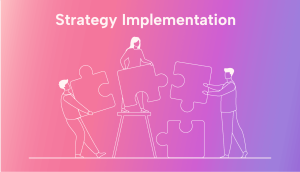Introduction Coaches have always sought ways to push athletes to their best. Now, data changes the game. By tracking numbers rather than guessing, coaches can create precise plans that boost strength, speed, and skill. Top teams use sensors, video feeds, and software to gather real-time feedback. Then they turn that data into winning moves on
Introduction
Coaches have always sought ways to push athletes to their best. Now, data changes the game. By tracking numbers rather than guessing, coaches can create precise plans that boost strength, speed, and skill. Top teams use sensors, video feeds, and software to gather real-time feedback. Then they turn that data into winning moves on the field. In this article, you will learn what data-driven coaching means, the types of data that matter most, the tools that make analysis easy, and the strategies that transform insights into results. Whether you work with pro football players, basketball stars, or track athletes, these coaching tactics will help you elevate performance and reduce injuries. Get ready to discover how numbers can power next-level training.
What Is Data-Driven Coaching?
Data-driven coaching uses numbers to guide decisions instead of relying only on gut feeling. Coaches collect metrics on workouts, games, health, and recovery. They look for patterns that predict success or signal fatigue. When one athlete’s heart rate spikes during sprint drills, a coach can adjust the session immediately. Over weeks and months, data shows which training loads yield gains and which push too far. The goal is to make every session count by matching workouts to each athlete’s unique needs.
This approach brings consistency. Coaches can compare performance over time and across players. They spot strengths to build on and weaknesses to fix. Data-driven coaching also brings transparency. Athletes see clear reasons for changes in their plan. This shared understanding boosts trust and motivation.
Key Data Types for Athlete Monitoring

Image by: Yandex.com
Physical Metrics
Physical metrics include speed, distance, acceleration, and jump height. GPS trackers on jerseys record how far and fast athletes run during practice. Timing gates at track events measure split-second differences in sprints. Jump mats capture vertical leap for basketball and volleyball training. Together, these metrics show an athlete’s raw athletic tools. Coaches use them to set benchmarks, design drills that target specific weaknesses, and track improvements over time.
Biometric Data
Biometric data covers heart rate, blood oxygen, and skin temperature. Wearable chest straps and wrist sensors collect this information during workouts. A sudden rise in resting heart rate can signal stress or early illness. Monitoring sleep quality and recovery helps coaches plan rest days. When an athlete’s recovery metrics fall, the coach may lighten the next session to avoid overtraining and reduce injury risk.
Performance Metrics
Performance metrics gauge skills in sport-specific tasks. In baseball, exit velocity and launch angle show hitting power. In soccer, pass completion rate and distance covered reveal technical and tactical skill. Video analysis tools tag each event in games, making it easy to count shots on goal, tackles made, and errors. By reviewing these stats, coaches can tailor skill drills and game plans to each athlete’s needs and the opponent’s tendencies.
Tools and Technologies for Data Analysis

Image by: Yandex.com
Wearables and Sensors
Modern wearables include GPS units, heart rate monitors, and inertial measurement units (IMUs). These small devices fit into vests or attach to shoes. They stream data to tablets or phones in real time. Teams use systems from brands like Catapult and Polar. These tools let coaches watch live workloads and adjust drills on the fly, keeping athletes in the optimal training zone.
Video Analysis Systems
Video analysis software breaks down footage into key moments. Programs like Hudl and Dartfish allow coaches to tag clips for review. An athlete’s sprint mechanics can be compared frame by frame to ideal form. Coaches can share highlight reels with players and discuss exact moments needing correction. This visual feedback speeds learning and builds muscle memory.
AI and Analytics Platforms
Artificial intelligence tools sift through large data sets to spot patterns humans might miss. Platforms from Stats Perform and Sportlogiq apply machine learning to recommend training plans and predict injury risks. They link physical, biometric, and performance data for a full picture of an athlete’s status. AI dashboards update immediately after each session, guiding next steps with clear, visual insights.
Strategies for Implementing Data-Driven Coaching

Image by: Yandex.com
Individual Training Plans
Every athlete is different. Data helps coaches tailor plans that suit each person’s needs. For example, two sprinters might share a track but require different rest intervals based on heart rate recovery. By reviewing each athlete’s data, coaches assign workouts that push hard days and ease off on slower recovery days. Personalized plans maximize progress and prevent burnout.
Load Management and Injury Prevention
Tracking training load—the product of intensity and volume—lets coaches spot when an athlete nears an injury threshold. Sudden spikes in load can lead to stress fractures or muscle strains. Using data, coaches can smooth out load increases over weeks. When monitoring shows fatigue climbing, they swap high-impact work for low-impact cross training. This balance cuts injury risk while keeping fitness gains on track.
Tactical Feedback and Game Prep
Coaches use performance data to craft game plans. Soccer coaches study an opposing team’s passing network and pressing habits. They then train their players on specific drills to counter those tactics. Basketball coaches analyze shooting zones where opponents allow the most points and prepare defenders accordingly. Data-driven scouting helps teams exploit weaknesses and refine strategies for each opponent.
Table: Data Types, Tools, and Coaching Benefits
| Data Type | Tools/Tech | Coaching Benefit |
|---|---|---|
| Physical Metrics | GPS trackers, IMUs | Precise workload tracking |
| Biometric Data | Heart rate monitors | Recovery monitoring, overtraining alerts |
| Performance Metrics | Video analysis | Skill breakdown, tactical planning |
| Combined Dashboards | AI analytics platforms | Integrated insights, predictive alerts |
Overcoming Challenges in Data-Driven Coaching

Image by: Yandex.com
Adopting data-driven methods brings hurdles. First, data overload can confuse coaches without clear goals. To avoid this, focus on a few key metrics aligned with each athlete’s needs. Second, cost of top-tier tech may strain budgets. Small teams can start with affordable wearables and free video tools before scaling up. Third, data privacy and security matter. Coaches must safeguard athlete information and get proper consent before collecting personal biometrics.
Training coaches on new tools also takes time. Regular workshops and partnered sessions with technology providers help staff gain confidence. Over months, teams can build a culture where data informs decisions daily without overshadowing human judgment.
Future Trends in Data-Driven Coaching
Emerging trends point to even deeper insights. Wearables will shrink further, moving into smart fabrics that measure metrics seamlessly. AI models will refine predictions of performance peaks and injury risk with greater accuracy. Virtual reality training incorporating real data will let athletes practice in simulated game scenarios. Genetics and nutrition data will merge with performance metrics, generating fully personalized training and meal plans.
As technology and sport science converge, data-driven coaching will become mainstream, not just for pros but youth and amateur teams too. This shift promises faster improvements, fewer injuries, and smarter competition strategies at every level.
Conclusion
Data-driven coaching transforms athletic training from guesswork into precision science. Coaches gather physical, biometric, and performance data, then use wearables, video tools, and AI platforms to analyze it. By creating individual plans, managing loads, and preparing tactical game strategies, they help athletes reach peak performance and avoid injury. Though challenges like data overload and cost exist, careful focus on key metrics and phased technology adoption make data-driven methods accessible. As wearables evolve and AI grows smarter, data-driven coaching will redefine how we train and compete in sports. Embrace these strategies to guide athletes to new heights of success.
Call-to-Action
Ready to take your coaching to the next level? Start tracking one key metric this week—like sprint speed or recovery heart rate—and watch how data can elevate your athletes’ performance!
















